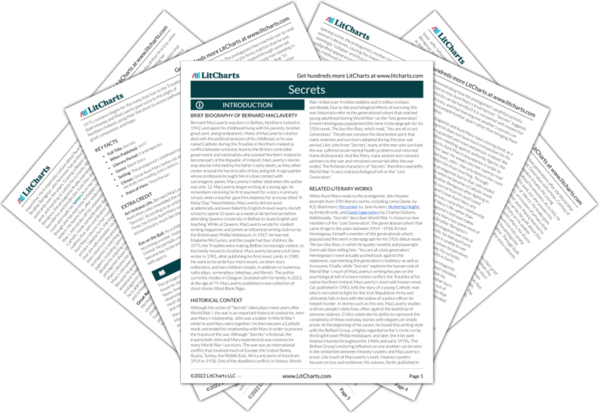This letter establishes that John became a Catholic monk (Brother Benignus) after the war, leading him to break up with Mary. In joining the monastic brotherhood, John seems to have been able to face his trauma and make meaning from it, as he now feels that the horrors of the war allowed him to hear God’s voice. Tracing the metaphor of John’s trauma as a frozen winter, John seems like he has begun to “thaw” and feel his emotions again. In this way, the story suggests that processing grief and trauma, instead of ignoring it, is an important part of healing.The letter also reveals Mary’s own emotional martyrdom. After John sacrificed their relationship in order to pursue his religious calling, Mary seems to have sacrificed the life
she wanted to live as well. Instead of pursuing another relationship with someone else, she lives a secluded and devout life, much like Brother Benignus’s monastic practices. But unlike Brother Benignus’s sacrifice, this sacrifice appears to keep Mary stuck in the past, rather than helping her heal.
